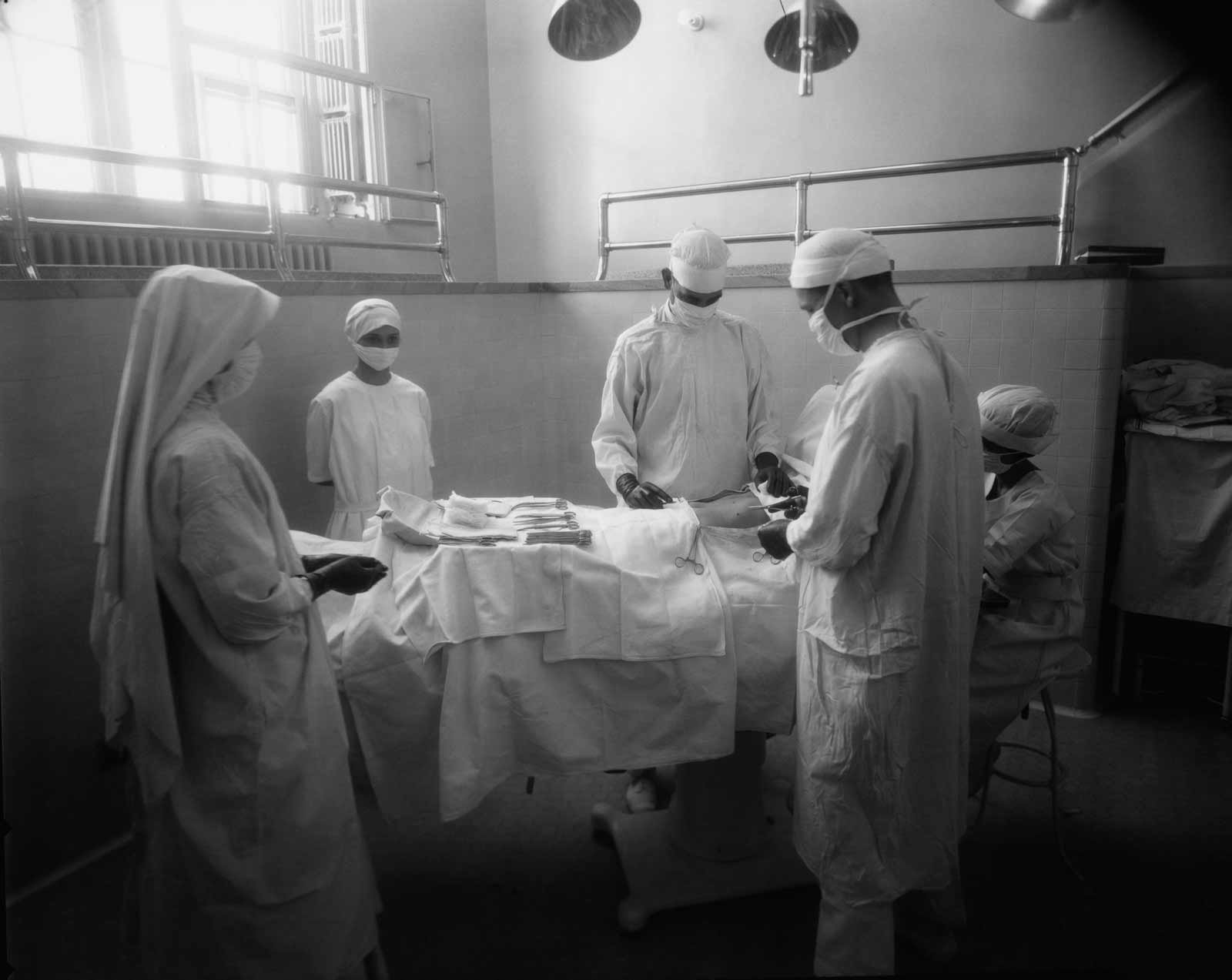Mayo Clinic as Model for a New Hospital in the 21st Century
In the history of modern medicine, the name of Mayo Clinic shines like the sun. Throughout the 20th century, Mayo Clinic was at the forefront of innovation in research and it pioneered the framing of procedures that were adopted by medical institutions all over the world. Established as a partnership between a medical practitioner and a religious institution during a time of need, the Mayo Clinic has stood the test of time and remained at the vanguard of medical care in the world. Even today, widely followed global hospital rankings like those by Newsweek and US News and World Report rank Mayo Clinic as the #1 hospital in the world. For establishing a new medical institute in India in the 21st century, the Mayo Clinic can still serve as the guiding model.
A documentary released in 2018, titled ‘The Mayo Clinic: Faith, Hope, and Science’, by the renowned documentarian Ken Burns, captures the history and philosophy of the establishment and tries to decode the secrets behind its rapid growth. The documentary opens with an African proverb that encapsulates the ethos of the hospital in a couplet:
“If you want to go fast, go alone.
If you want to go far, go together.”
Mayo Clinic is located in Rochester, Minnesota, in the United States. It’s origin story in the relatively small farming community in southern Minnesota is as extraordinary as its many achievements. A fierce tornado tore through Rochester in 1883, causing damage to life and property. After the storm, Mother Alfred of the Sisters of St. Francis offered her nunnery, a religious teaching establishment, to Dr. William Mayo and his sons, Dr. Will and Dr. Charlie, to treat patients affected by the storm. At the time, the nunnery was fairly empty because most students had gone home for summer vacations. Mother Alfred later said that she had a vision from God that Mayo should build a hospital there, and it will become the most renowned hospital in the world. Her vision was proven right.
Today, we think of science and religion as opposite sides of a coin, clashing against each other, impossible to reconcile, but when Mayo Clinic started its operations in 1889 as St. Mary’s Hospital, with Dr. William Mayo and his two sons on staff, it was perfectly natural for the founders to establish a medical institution that was also faith-based. The partnership between Mayo and the Sisters of St. Francis was sealed over nothing more than a handshake. It was an unlikely partnership as Mayo himself was an agnostic and a Darwinian evolutionist. His only desire was to serve the people of his community. From the beginning, William Mayo believed that no one medical practitioner has even a fraction of the knowledge of medical science, so the key to running a hospital is in collaboration of all staff functions with the patient’s well-being at the centre, where all services must necessarily flow.
Part of the reason for Mayo Clinic’s long-term success has been its questioning of its own practices, from the question of profit in medicine to the nature of healing itself. William Mayo said that the goal of the hospital was not to treat diseases, but to treat people. With that vision, the doctors worked on all angles, with miraculous results. Mayo Clinic became the hospital people turned to when they had lost hope everywhere else. The Dalai Lama, talking about Mayo Clinic, said that life is nothing but hope. Among faith, hope, and science, that define the hospital’s ethos, hope is particularly important. “Do all the good to your fellow man,” William Mayo said. If a patient seemed poor, he wouldn’t charge him. He said that if anything could be of use to the patient, it should be done. The cost of treating poorer patients was covered by the fees collected from richer ones.
The Mayo Clinic treats more than 1 million patients per year, through all its branches. According to figures from 2016, it treats 4000 patients, conducts 9000 examinations, 300 surgeries, evaluates 5000 lab specimens, 4600 diagnostic procedures, and performs 230 radiologies, per day. All physicians at the hospital are on salary, creating a culture of collaboration without a profit motive. Today, Mayo Clinic has branches and offices all over the world. A hospital cannot rest on its laurels, no matter how storied its past, and must stay apace with new research and know-how. It is only as good as its next customer. Thus, a strong operational philosophy is what drives innovation. It is this operational model that is the biggest gift of Mayo Clinic to the world of healthcare.
Since its beginning, Mayo Clinic was nurtured by the Mayo family. William Mayo’s sons, Will and Charlie, accompanied their father to the hospital since early in their boyhood. Their mother, Louise, also helped. William had a single-minded desire to serve his community, keeping his doors open to all sick persons, irrespective of religion, social status, etc. When Mother Alfred was confident that she could raise the money for the hospital, she made a handshake agreement with William Mayo to serve as its lead physician. For the next 100 years, all agreements between the Sisters of St. Francis and Mayo Clinic would be done by handshake only. The Sisters worked as nurses, going out of their way to make way out of nothing. They were taught to treat every patient like he was Jesus Christ.
When the older Mayo found it difficult to carry on his duties, his sons Will and Charlie Mayo took over all operations of the hospital and further strengthened the vision of their father. The brothers were very close and constantly consulted each other and discussed all cases. They believed that in medicine, individualism has no place. The value of someone else’s opinion could prove the difference between life and death. Patients, especially terminal ones, can get tremendous hope from learning that their doctors are pushing the boundaries. Even if your time is limited, you should be able to walk away with hope.
One of the biggest contributions of the Mayo brothers to the field of medicine was the concept of Multi-Specialty. This was merely an extension of their father’s philosophy that the patient must always be at the centre, the hub of the system and not a spoke. All care must revolve around him. This system also fosters teamwork. The method of keeping case files on a patient was also invented at Mayo Clinic. Earlier, case notes by different physicians were kept separately. At Mayo Clinic, all information about a patient was kept in one place. The pathology department was not elsewhere in some remote lab, as was normal earlier, but part of the same complex, so that lab results were available to case doctors immediately.
The founders instilled a sense of idealism in healthcare that might seem naive today. They did not yield to the norms of consumerism and capitalism. They believed that the rules of capitalism did not apply to people in need of immediate care. They left a model that is followed by healthcare institutions to this day, where providers feel they have an obligation to provide care no matter what it costs. The Mayo brothers believed that the money they gained from providing care must go back to the benefit of the people. In 1919, a few years after their father had passed away, they transferred their assets to a trust. All proceeds beyond operating expenses were turned over to research and grants. Instead of reaping personal benefit, they dedicated all assets to the greater good. A governance structure was put into place in which the hospital was run by a Board of Governors. The Mayo family relinquished the authority they had. Now they and their future generations would have to earn their place in a medical democracy. All doctors, including those from the Mayo family, were on salary and not on fee-for-service.
Doctors choose to work at Mayo Clinic because of its ideals and a system that is devoted to their profession. It’s always about the patient; doctors are never alone to find a solution to a patient’s problems. A physician is always also a researcher. Investigation is a part of practice. The doctors at Mayo Clinic knew that medicine is both an art and a science. The design and architecture of the building must play a role in the healing process. Healing must begin the moment a patient walks into the hospital, even before seeing the doctor. The patient must enter a frame of mind of healing and be comfortable in it. To achieve this, the hospital consulted many architects and designers. Now there is a piano in the lobby, and there are frequent performances.
Over the more than a century of its existence, Mayo Clinic has been exceptional in guarding itself against the illusion of greatness. Instead, it earns its greatness every day. The pace of medical knowledge has increased in recent years and is not going to slow down. The principles laid down by the founders of Mayo Clinic are as relevant today as they were in the late 19th century. It will take a distributive and collaborative mindset to keep pace and take advantage of new knowledge and innovations. The doctors must do what is in the best interest of the patient and everything else will fall into place. Spending extra on research will yield dividends and grow knowledge. To all patients entering its doors, Mayo Clinic offers hope when it is not available elsewhere, and that is worth emulating in any century or country.
Sajid Ahmed







